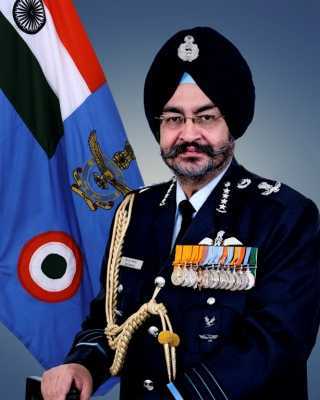Indian Air Force chief B.S. Dhanoa on Saturday hinted at more Pathankot-type terror attacks on military bases in the country.
“…The military will continue to get targeted, like it happened at Pathankot. They (terrorists) will try and surprise us by attacking in a totally new location,” he delivering the annual lecture in the memory of late IAF chief, Air Chief Marshal L.M. Katre here.
A heavily-armed terror group from across the border attacked IAF’s Pathankot base on January 2, 2016, and seven security personnel were killed before the 10 terrorists were killed in a operation lasting for three days.
“Post Pathankot terrorist attacks last year, the IAF has carried out a series of measures to enhance its ability to protect,” said Air Chief Marshal Dhanoa.
Reiterating that the IAF had strengthened the defence of its bases, he said intense training had been carried out to counter ‘fidayeen’ attacks.
“As a service, we are prepared for a conflict at a very short notice,” he said.
Ruling out any large-scale terror attack on civil structure as in the 26/11 Mumbai attack, Dhanoa said the military would be targeted.
“The possibility of a large-scale terror attack on civil infrastructure like it happened in Mumbai on 26/11, or on Parliament (on December 13, 2001), is slightly remote, as it will invite worldwide condemnation,” he said.
On the strategic environment, Dhanoa said on the northern border, there was a difference in the Indian and Chinese perception of the Line of Actual Control (LAC), which is sometimes at “so much variation that it results in a standoff, which hopefully gets resolved”.
Referring to the recent standoff at Doklam, Dhanoa clarified that there was no airspace violation from either side as fighters on both sides maintain at least 10 km distance from the LAC.
China, however, maintains a continuous air presence in Tibet and the strength of its presence increases and decreases as per the exercises, he said.
“In case the relationship (between the countries) deteriorates, a buildup of infrastructure is the first step that anybody would take before they envisage any offensive operation in this sector,” he added.
Noting that the IAF was replacing its low-end weapons with indigenous ones, the Air Chief said the top-end weapons were imported.
“If we don’t import, our low-end weapons will not be able to survive. We need the top-of-the-line weapons to win the deep battles,” he said.
Reaffirming that the IAF was committed to indigenisation, he said the IAF does not pay only lip service to indigenization, as it paid with the lives of its test pilots and engineers.
“Since Independence, 17 air force pilots and engineers died in air accidents during testing of the indigenous aircraft,” he noted.

